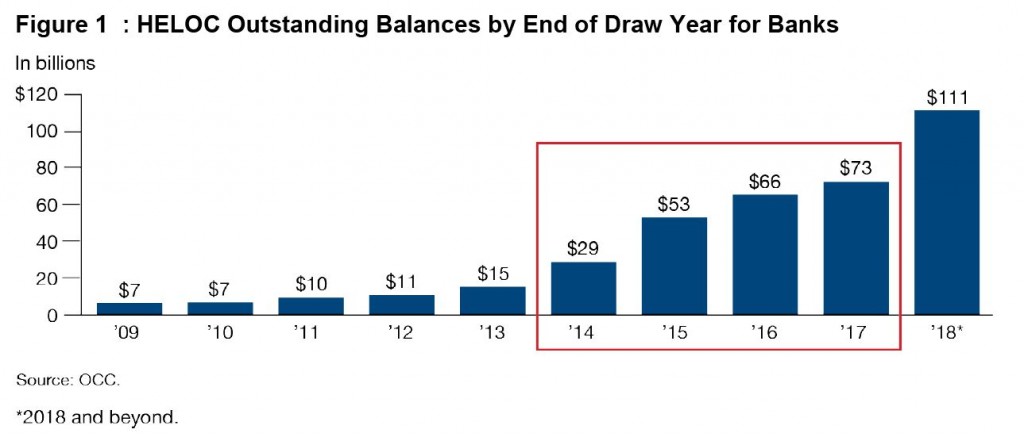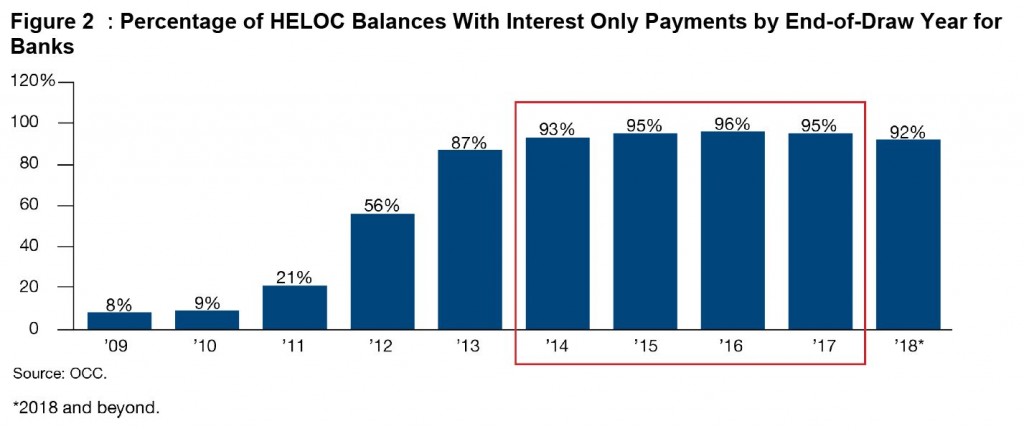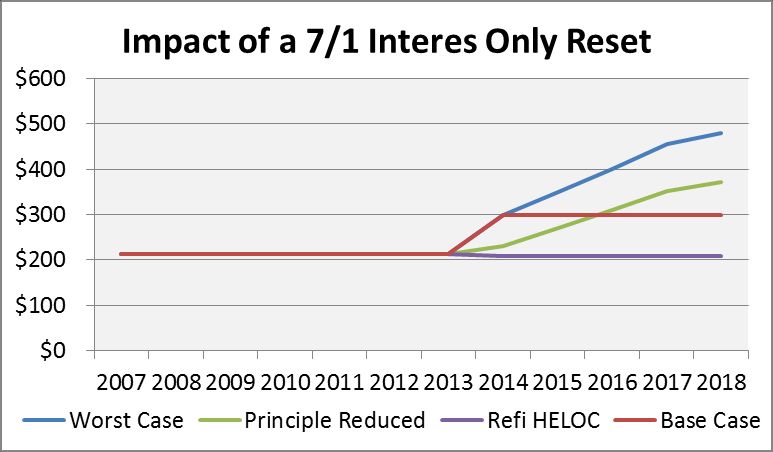(NAR) -- The Office of the Comptroller of the Currency published its Semiannual Risk Perspective for the spring of 2012 on July 5th. In it, the agency outlined concerns about a potential wave of rate resets on home equity lines of credit (HELOCs) that are set to occur from 2014 until 2017. While these loans certainly merit concern given the already stressed banking and mortgage finance system, the current market environment has created room for borrowers to absorb the higher costs and primed the banking system to provide aid where needed, which should help to ameliorate this issue.
According to the OCC, on average HELOCs accounted for roughly $500 billion of the combined balance sheets of the banks monitored by the agency in 2010 and that those portfolios fell through 2011. As a share of all bank assets, HELOCs acount for only 9% compared to 27% for 1-4 family residences and 11% for credit cards. Furthermore, the charge off rate was roughly 2% in 2011 compared to near 6% for credit cards.
However, as pictured in figure 1, beginning in 2014, the balance on HELOCs that will end their draw (e.g. convert from a line of credit to loan that must be repaid) will begin to rise from $29 billion in 2014 to $73 billion by 2017. Of concern to the bank regulator isn’t just the size of the blances coming due, rather it is the fact that the value of many of the homes backing these loans has decline, some significantly, and that a majortiy of these loans were interest only (figure 2), meaning that the holder has only paid interest to date and that the rate reset will be joined by principal payments.
An example will help to clarify. For a borrower who took out a HELOC with a balance of 20% of the value of their $200,000 home or $40,000 in 2007, they would pay $213 a month for the first seven years at the prevailing rate of 6.39% for an interest only 7/1 HELOC in July of 2007. However, when the loan resets it will change to the prime rate plus the banks profit margin. While the current prime rate is 3.25%, it is likely to rise, so for this example I’ll use 5.25% plus a margin of 2.0% for a rate of 7.25%. That would translate into a jump in the monthly payment of $85 for a total of $298, or a 40% increase assuming that the balance of $40,000 is ammoritized over a 23 year period; a shorter period would cause the payment to rise further. If the prime rate continued to rise, but was capped at 2% per year, by the fifth year the monthly payment would be $481 or a 126% increase as depicted by the blue line below. A base case where the prime rate hovers at 5.25% is also included in graph.






